Samsung Galaxy Mega 6.3 Review - Performance and Camera Review
Performance and Camera
This huge 6.3-inch Android phone will crush you puny humans
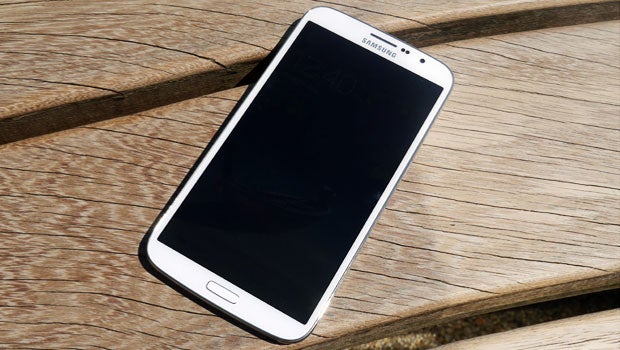
Sections
- Page 1 Samsung Galaxy Mega 6.3 Review
- Page 2 Software and Video Review
- Page 3 Performance and Camera Review
- Page 4 Battery Life, Call Quality and Verdict Review
Samsung Galaxy Mega 6.3 – Performance
To go with its mid-grade screen, the Galaxy Mega has a mid-range processor. It’s a dual-core processor CPU on the Krait architecture – a 1.7GHz Qualcomm Snapdragon 400 chipset.
Although dual-core, this is an otherwise up-to-date chipset that offers good day-to-day performance, in part thanks to the 1.5GB of RAM. There’s some minor, very occasional stuttering but no consistent lag. 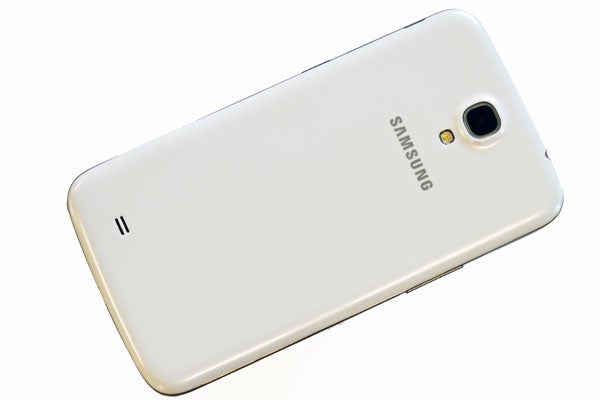
Benchmarks show that the Samsung Galaxy Mega is significantly slower than a phone like the Samsung Galaxy S4 – for example the Mega scores around 13,000 points in the AnTutu benchmark, where the S4 scores around 24,000. However, there’s little to show the phone up too badly at present.
There appeared to be more texture pop-in and slight frame rate inconsistency in impressive 3D racer Real Racing 3, but it’s more a case that the Mega will age more quickly than a top-end phone, rather than that there are things it currently cannot do well. Although dual-core, it’s fairly powerful.
Samsung Galaxy Mega 6.3 – Internal Speaker
Speaker placement in the Galaxy Mega is typical of Samsung’s Android phones. There’s just one speaker output, which sits to the bottom-left of the phone’s rear.
In a phone this size, you might hope to see stereo speakers, so that when watching a film the sound isn’t completely mono. However, its performance is pretty good regardless. The Samsung Galaxy Mega goes much louder than most, and has beefier bass than the vast majority of phones too. 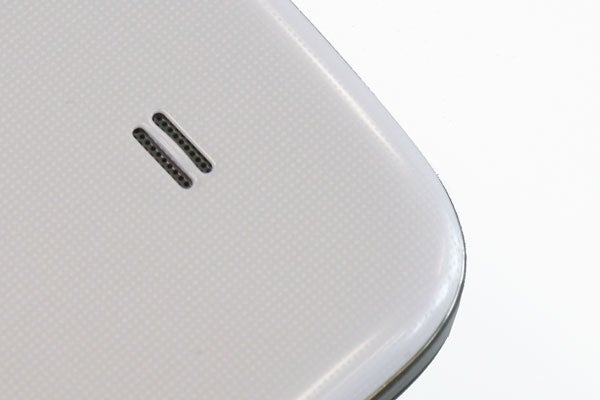
Samsung Galaxy Mega 6.3 – Camera
The Samsung Galaxy Mega has a camera that’s roughly a year behind the competition. Its core specs are identical to those of the Samsung Galaxy S3 – an 8-megapixel main sensor and f/2.6 aperture lens.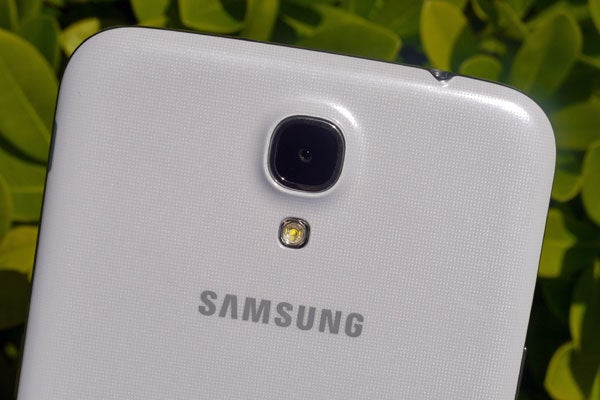
Its image style is typical of a Samsung phone – they are processed to give a punchy, high-contrast look that is high on impact, if not quite as great at producing an entirely natural look when examined more critically.
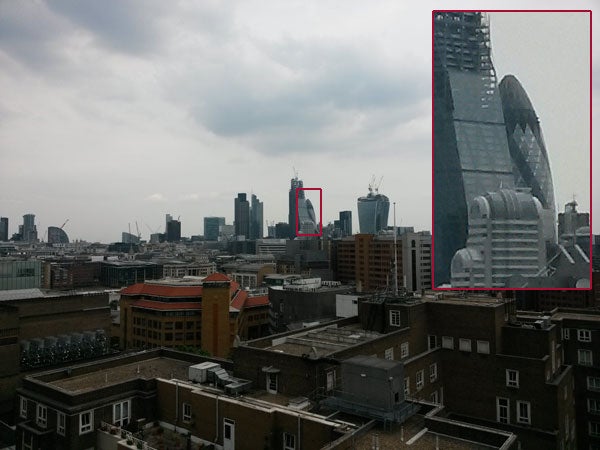
Macro performance is reasonable, although you can’t get super up-close to the subject. Around 15cm distance is required to get a solid lock-in in most conditions. 

This 1:1 pixel crop gives you a decent idea of the amount of close-up detail you can get with the Samsung Galaxy Mega.
Given how small a proportion of the full photo’s scene this represents, it’s a pretty good performance. However, other Samsung phones we’ve tested have managed to get closer to the subject while maintaining focus.
Low-light performance won’t get close to matching something like the HTC One or Lumia 925, either. With a fairly slow lens, no optical stabilisation and a ‘standard’, tiny 8-megapixel sensor, it can’t do much with a low-light situation without resorting to a using the flash. 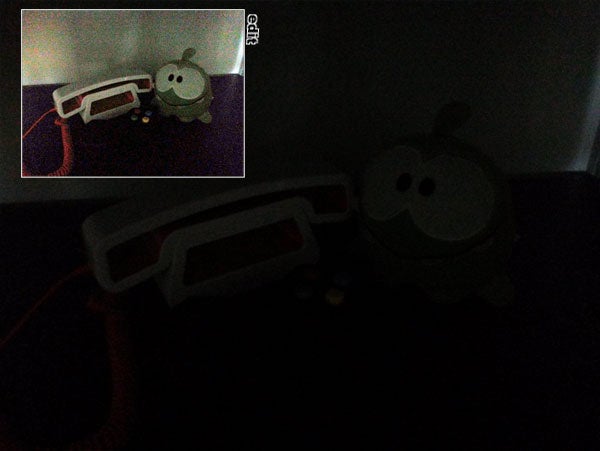
To the human eye, this scene was a lot less dark than it appears in the photo. A Photoshop edit of the photo shows that there is some more ‘hidden’ detail to be exposed, but the resulting image is horribly noisy.

The same scene with LED flash in action
The Mega offers a solid array of additional photo modes. The most useful for everyday shooting are HDR (“rich tone”), which melds to exposures to increase dynamic range – the level of detail resolved in very bright and very dark areas – and panorama.
Other photographic standards include the continuous shot burst mode and a couple of more specific burst modes that pick out shots with the best picture of the subject (where that’s a person, that is.)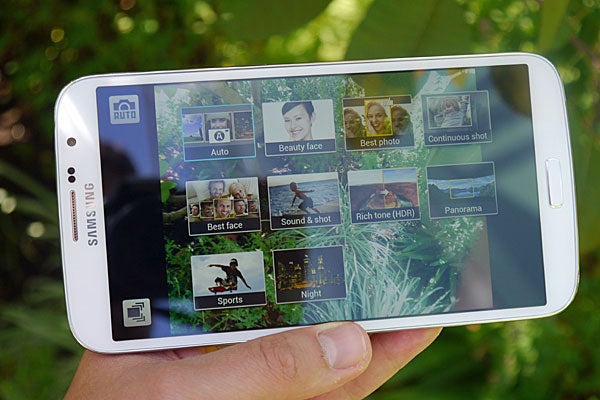
More frivolous extras include Sound & Shot, which records an audio clip along with the snap, and the standard array of basic filters such as Solarise and Vintage.
For a company renowned for packing-in as many phone features it can, the Samsung Galaxy Mega camera app is actually pretty classy. And dead easy to use.
There is some more fun to be had post-shoot, though. You can edit photos, and beyond the usual cropping and fiddling with brightness you can also mess around with people’s facial features when they’ve been papped straight-on.

News editor Luke Johnson, post-fiddle
Its video skills are pretty good too. The phone shoots at 1080p and has software stabilisation to stop handheld video from looking too juddery. It’s not a perfect replacement for hardware stabilisation, but OIS is still a rarity in mobile phones.
The Mega’s video focusing is solid. There’s both mid-capture touch focusing and autofocus, making it a versatile mobile video camera. Sadly there are none of the active face-distorting video effects included in an up-to-date vanilla Android phone.
There are also a few bits missing that you’ll find in other new Samsung phones too, such as simultaneous rear and front camera photo capture (a feature we didn’t miss) and HDR video (which we did miss).
How we test phones
We test every mobile phone we review thoroughly. We use industry standard tests to compare features properly and we use the phone as our main device over the review period. We’ll always tell you what we find and we never, ever, accept money to review a product.


